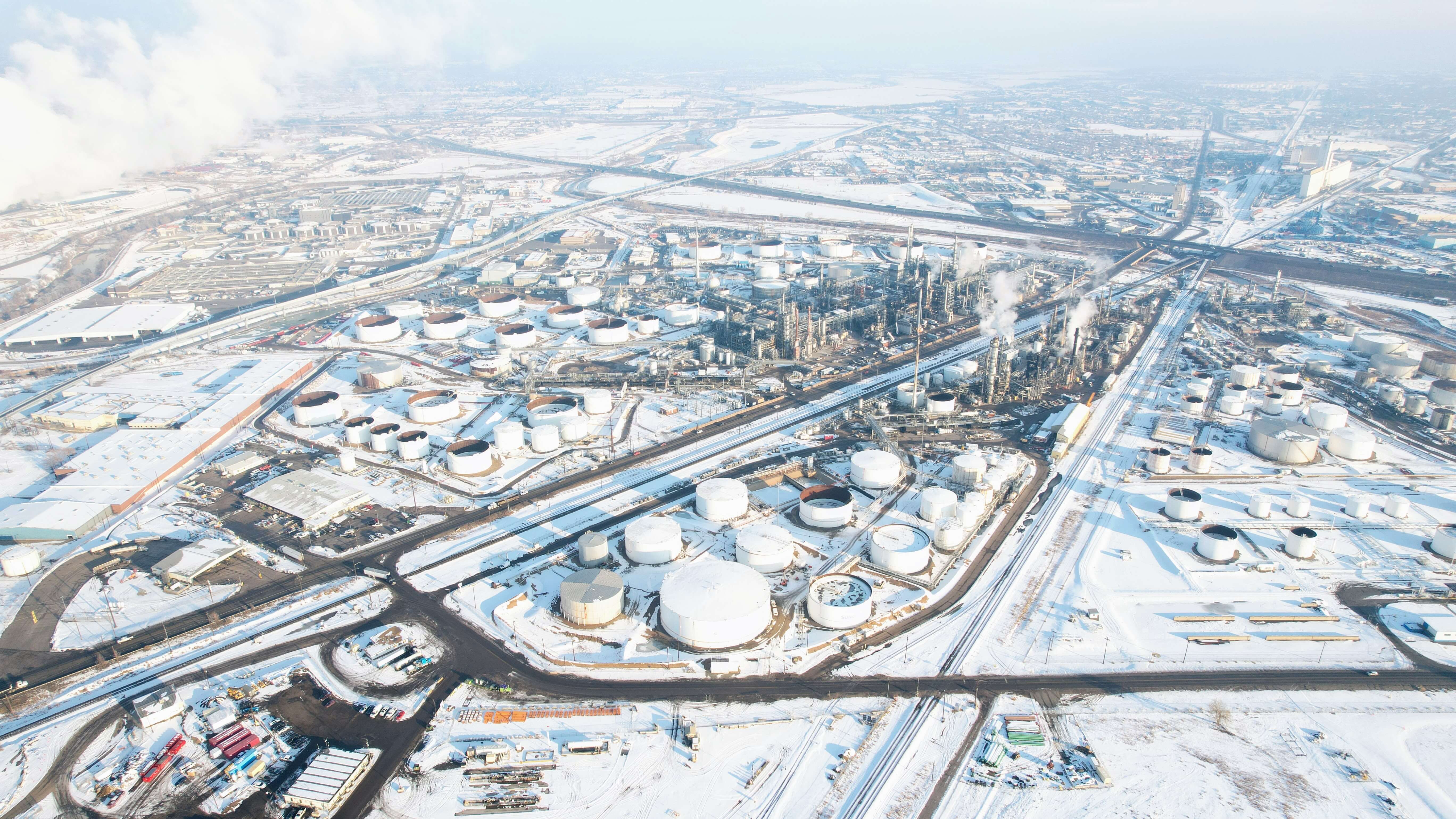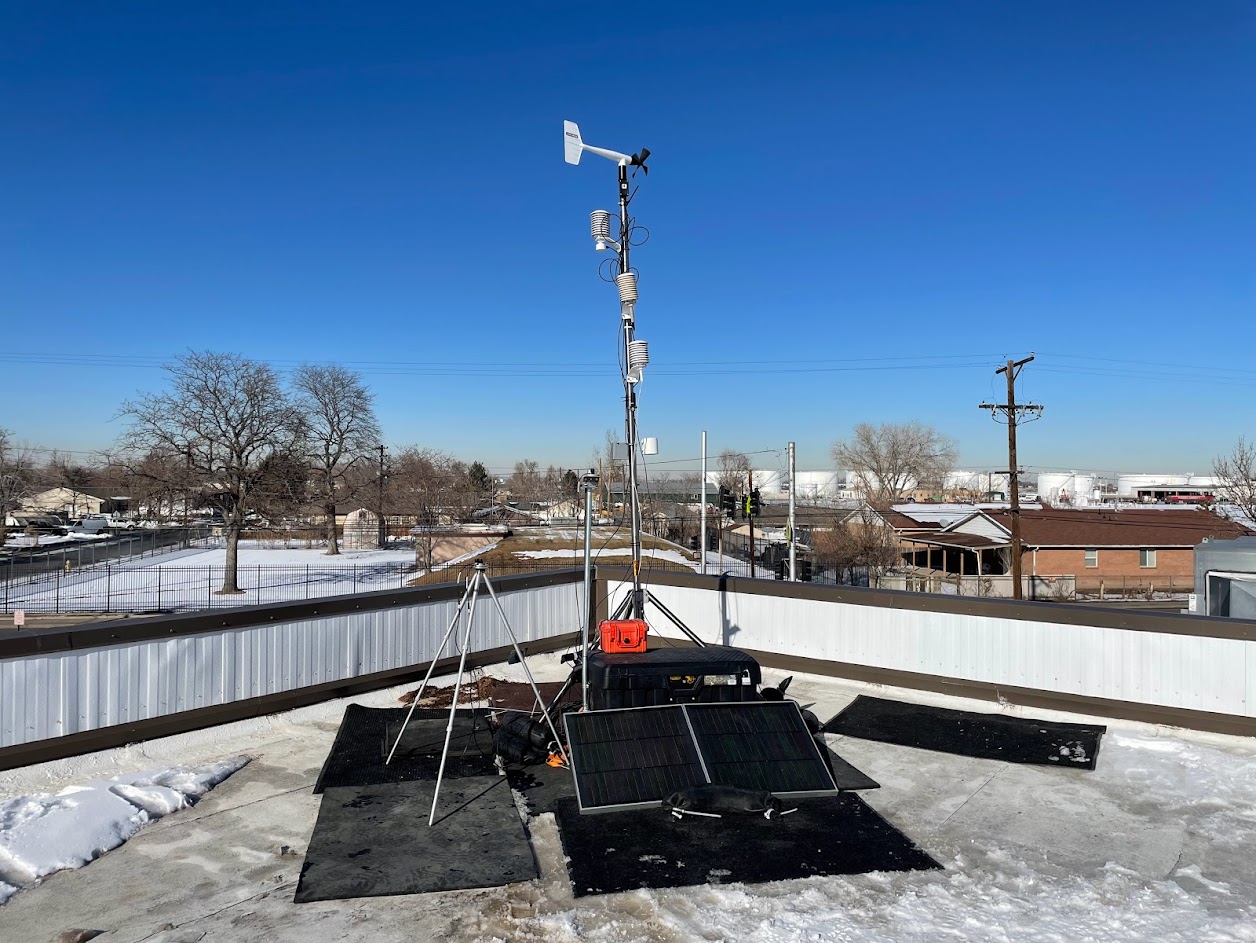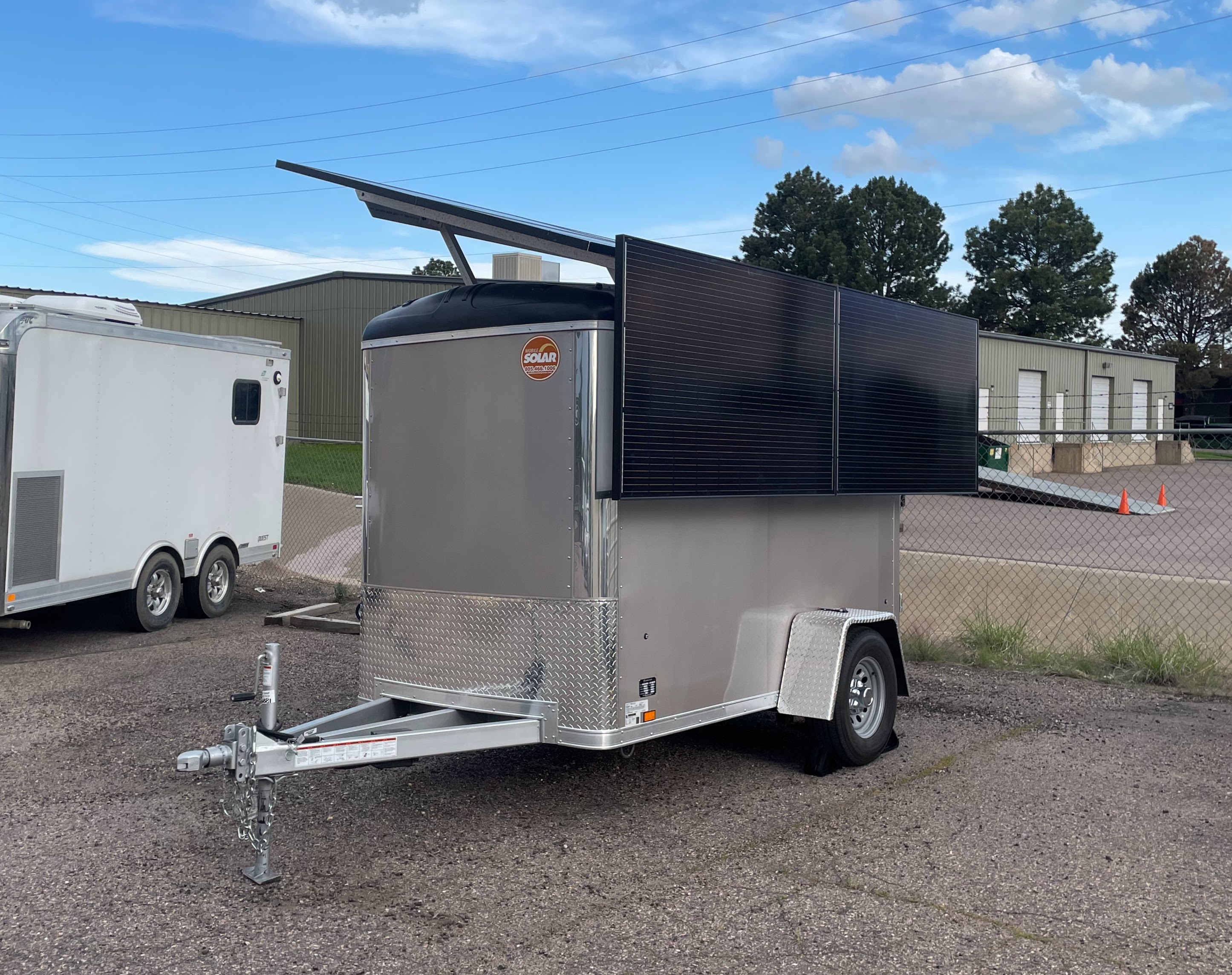Fenceline and community monitoring programs provide information about the amount of air toxics at the fenceline of a facility or in a nearby community adjacent to a facility or facilities emitting air toxics.
Fenceline air toxics monitoring
Several facilities in Colorado are required to continuously monitor for hydrogen cyanide (HCN), hydrogen sulfide (H2S), and benzene at the perimeter, or fenceline, of the facility. These air pollution sources must also make these data available to the public, as outlined in House Bill 21-1189: Colorado’s Regulate Air Toxics Act.

Fenceline monitoring is useful in identifying unintended, or fugitive, air pollution emissions from operations not captured by continuous emission monitoring systems (CEMS) on the stack (where the emissions are released). This information allows facilities to identify and repair leaks faster.
Fenceline monitoring also provides notifications to surrounding communities when an exceedance occurs. Prior to monitoring, and on a five year cycle, each covered facility must prepare and submit a fenceline monitoring plan to the Air Pollution Control Division for approval. The division also hosts public meetings and public comment periods prior to finalizing the plans.
Additional information on draft fenceline monitoring plans for each of Colorado’s covered facilities is available on the on the division’s Regulate Air Toxics Act website.
Final fenceline monitoring plans and data will be linked here as they become available:
- Suncor Refinery in Commerce City: Fenceline Monitoring Plan | Monitoring Data*
- Phillips 66 Pipeline, LLC: Fenceline Monitoring Plan | Monitoring Data*
- Holly Energy Partners (Sinclair) - Denver Terminal: Fenceline Monitoring Plan | Monitoring Data*
- Collin’s Aerospace (Goodrich Carbon Products) in Pueblo: Fenceline Monitoring Plan | Monitoring Data*
*Disclaimer: These sites are managed and updated by third-parties. The Air Pollution Control Division cannot confirm the accuracy of the data published at any given time.
Community air toxics monitoring
The act requires monitoring of hydrogen cyanide (HCN), hydrogen sulfide (H2S), and benzene in the communities within a 3-mile radius of covered facilities. This monitoring is conducted with a combination of mobile and stationary measurement tools.
Mobile community monitoring
The Community Air Toxics (CAT) and Emissions Monitoring Utility (EMU) mobile monitoring vans employ state-of-the-art technology to monitor a wide range of volatile organic compounds (VOCs), including benzene, hydrogen sulfide and hydrogen cyanide in near real-time while driving.
Monitoring routes focus on disproportionately impacted communities and cover a wide area within the 3-mile radius of the covered facilities. Repetition of these routes provides information on community impacts over time.
The CAT is focused on meeting the community monitoring requirements of HB21-1189. The EMU can serve as a backup to the CAT for HB21-1189 monitoring, but is also free to investigate other compounds and facilities across Colorado.
Ground-based community monitoring

The ground-based community monitors will be part of the division’s Municipality-Tied Ground-based Observations of Air Toxics (MT GOAT) network. The network is designed to support the community-based monitoring requirements of the act. There are three permanent MT GOAT network sites that will continuously monitor benzene, hydrogen cyanide, hydrogen sulfide, and other air toxics in disproportionately impacted communities within a 3-mile radius of HB21-1189 covered facilities. The covered facilities include Suncor Refinery in Commerce City, Phillips 66 Pipeline, LLC in Commerce City, Holly Energy Partners (Sinclair) - Denver Terminal in Henderson, and Collin’s Aerospace (Goodrich Carbon Products) in Pueblo. The Suncor Refinery and Phillips 66 Terminal are located in close proximity to each other, so a single network site will be situated within a 3.5-mile radius of the two facilities.
Each network site will be equipped with a meteorological station to measure parameters such as wind direction, wind speed, temperature, pressure, and relative humidity.
From January to December 2023, there were three ground-based community monitors operating within a 3-mile radius of covered facilities. Each temporary ground-based site used passive samplers to collect emissions of benzene, hydrogen cyanide, and hydrogen sulfide over a period of 14 days. The ground-based measurements supplemented mobile community air toxics monitoring from the CAT mobile monitoring van.
The Mobile Air Remote MOnitoring Trailer (MARMOT), which is a new solar-powered trailer platform, was completed in 2024. This platform can be deployed to areas of concern and operate without ground power. The trailer platform can be customized with different analyzers depending on the pollutants of concern in a community. Some potential targeted compounds that could be measured using various analyzers include:
- Volatile organic compounds, including BTEX (benzene, toluene, ethylbenzene, and xylene) and ethylene oxide (EtO)
- Hydrogen sulfide
- Sulfur dioxide
- Methane
- Ethane
